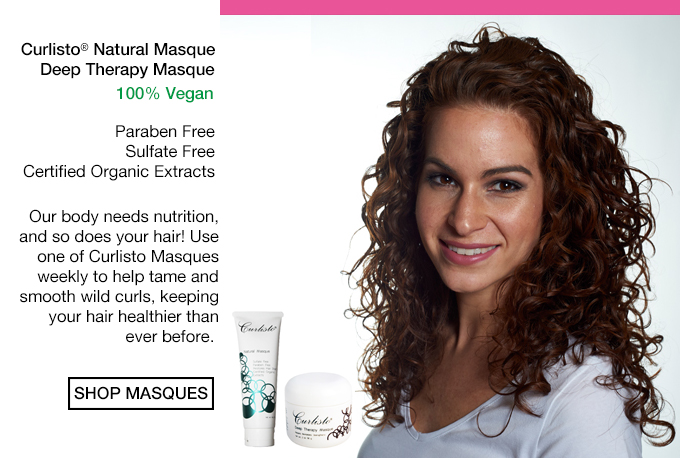We don’t call hair your “crowning glory” for nothing. Taking care of your hair – making it healthy, soft, and beautiful – is a top priority for us at Christo. Curly hair care isn’t always the easiest, but the first step to gorgeous, manageable locks is knowing your hair porosity.
Aside from your curl pattern, hair porosity is the single most important thing you need to know about your hair. Your porosity level determines what kind of hair care routine you need to adopt and which products will work best on your hair.
Start your healthy hair journey the right way, and learn more about your hair porosity right here.
What Is Hair Porosity?
In a nutshell, hair porosity is how well your hair absorbs and retains moisture.
Porosity is usually genetic, but it can change throughout your life depending on a variety of factors. Exposure, heat treatments, chemical processing, and environmental damage (like pollution) can all affect your hair porosity.
Each individual hair strand you have is made up of layers. The outer layer is called the cuticle, and it looks like scales or roof shingles placed over each other. The cuticle is flexible and can open up to allow oils and water to pass in and out of your hair.
What determines hair porosity?
If your cuticle is close together and tightly compacted, then water and products will have a hard time permeating your hair strand. This means you have low porosity hair, which takes a while to dry and is more difficult to style.
On the other hand, high porosity hair is characterized by very open cuticles. This kind of hair is usually prone to frizz and drying out and needs super-rich hair care products to keep it healthy and shiny.
How Do You Test For Your Hair Porosity?
If you don’t already know your hair porosity, you should definitely test it out. You’ll learn more about your hair and what it needs, so you don’t waste time and money buying the wrong kinds of products.
There are three ways you can test your hair at home, but you can also make an appointment with us at Christo 5th Ave Salon to get an expert’s diagnosis.
To test your hair porosity yourself, you can do either a slide test, float test, or spray test.
Slide Test
The slide test is one of the easiest porosity tests you can perform any time, anywhere. It doesn’t require any materials or equipment.
With one hand, take a section of your hair and stretch it out.
Without letting go, hold the tips of your hair with your thumb and forefinger on your other hand.
Gently slide your fingers up the hair strands toward your scalp.
If it feels smooth and dense, you have low porosity hair.
If it feels mostly smooth, you have normal porosity hair.
If it feels bumpy, rough, or it breaks during the test, you have high porosity hair.
Float Test
The float test is a very common way to check your hair porosity. Your hair needs to be clean and free of products, so it’s best to do this test after showering. Make sure your hair is dry before performing the test.
Take a couple strands of clean hair, whether from your head or a brush.
Fill up a glass with clean, room temperature water.
Drop the strands of hair into the glass, and observe how the hair reacts.
If the hair floats at the top even after several minutes, you have low porosity hair.
If the hair floats somewhere in the middle or slowly sinks after a few minutes, you have medium porosity hair.
If the hair quickly sinks to the bottom of the glass, you have high porosity hair.
Spray Test
For the spray test, you need a small spritzer bottle filled with water. Start out with dry hair for the most accurate results.
Take a small section of your curls. Pin back your other hair if you need to.
Spray water on your curls and observe how your hair reacts to the water.
If the water just sits on top of the hair and beads up, you have low porosity hair.
If your hair slowly absorbs the water, you have normal porosity hair.
If your hair quickly absorbs the water, you have high porosity hair.
Low, Medium, and High Porosity Hair
Now that you know how porous your hair is, you can take much better care of it! Here we break down the basics of caring for low, medium/normal, and high porosity hair.
Low Porosity Hair Characteristics
Low porosity hair has a tightly-bound, compact cuticle layer. Your cuticles will lay flat and smooth, and don’t open up easily to allow moisture in or out.
One of the major characteristics of low porosity hair is that it takes a while for your hair to get fully wet, but it also takes a long time for it to dry after a shower.
Products tend to sit on and build up on top of your hair instead of penetrating it. This means that styling and coloring are much more difficult on low porosity hair. On the upside, your hair is less prone to damage and breaking. Plus, low porosity makes your hair look shiny, bouncy, and healthy.
Products for Low Porosity Hair
To prevent product build-up underneath your cuticle layer, stick to light conditioning oils like argan and grapeseed. A deep therapy masque is also a great option. It’s best to apply products when your hair is damp instead of fully dry. You can also use a moderate amount of heat to open up your cuticles when styling.
Medium Porosity Hair Characteristics
If you have normal porosity hair, congratulations! The hardest part is over. Medium levels of porosity are the lowest-maintenance of the three kinds of hair. Your hair easily absorbs and retains moisture, as demonstrated in your full, bouncy, and elastic locks.
Products for Medium Porosity Hair
Luckily for you, your hair will hold up well to styling and coloring. However, your hair can still get damaged from exposure to the elements or harsh chemicals, so be careful about the kinds of products you put on your hair.
Regularly do deep conditioning treatments, such as a deep therapy masque, to maintain your healthy hair.
High Porosity Hair Characteristics
If you’ve colored your hair or made it go through a harsh heat or chemical treatment, chances are you have high porosity hair.
However, even with virgin hair, you could still have highly-porous cuticles thanks to genetics or your environment.
High porosity hair has wide-open cuticles with gaps and holes, so it can easily absorb water and products. This also means that it dries out quickly, leaving your hair dehydrated, frizzy, and tangled.
Products for High Porosity Hair
While butter and oils can cause buildup on high porosity hair, and even lead to more damage, moisturizing conditioner can help your hair stay healthy.
Some great products for high porosity hair are:
Natural Masques
Natural Conditioners & Repair Creams
Structura Lotion Plus & Control Gel II
Make deep conditioning a regular part of your hair care routine, and incorporate a leave-in conditioner or moisturizer on those extra dry days. Always cap off your showers with a cold rinse to close off your cuticles, and avoid heat styling whenever possible.
What type of hair do you have?
Whether you have low porosity hair, high porosity hair, or somewhere in between, don’t worry!
There is an infinite number of products out there to help you take care of your hair, no matter what kind of you have.
Check out the Curlisto selection to shop for your hair type.



This helps me a lot. I am 59 years old and my hair for the last ten years has stop growing. I started wearing wigs. I have to admit I never knew it was so much involved in hair care. I want to come out of the wigs and wear my hair natural. I’m going to do the test tonight and see what porosity my hair is and take it from there.
Hi Linda, thank you for sharing your experience! Hair growth usually gets affected for a lot of reasons. You are welcome to come in for a consultation if you have any question. Consultation with our senior and master designers is free.
This was really help full bit still I don’t fully understand my hair porosity level it takes long to dry up ,I rarely experience product build up ,my hair is shiny ,soft ,bounce , healthy and easy to maintain ….so I really don’t know my porosity level.
Hi Mimie, thanks for sharing! Glad to know that your hair is healthy and easy to manage. If you have any question, you are welcome to come in for a consultation. Consultation with our senior and master designers is free.
Best traditional way to find out
Use a class of water take a small hair amount drop in the class see where will stay
Bottom high Porosity
Middle Medium porosity
Top is low porosity
You also welcome to see one of our profesional stylist for free consultation
What if I have characteristics of both low and high porous hair? During the Float test my hair floated on top, that’s the result of low porosity. During the slide test is is not smooth feeling and sometimes breaks. my hair is dry, brittle and frizzy. Not hard to manage tho.
How do I know how to help my hair if I don’t know if it’s high or low porosity??